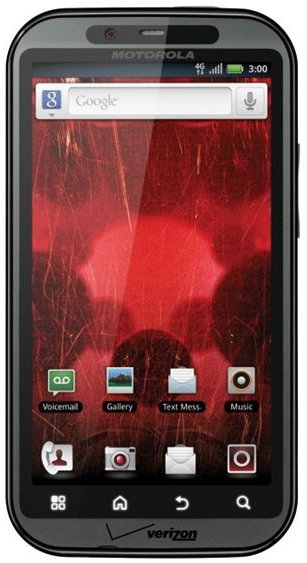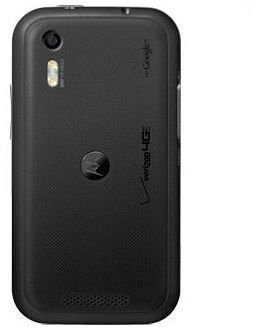Motorola Droid Bionic Review - First Look at Verizon's 4G LTE Smartphone from Motorola
The 2011 Consumer Electronics Show was a huge launchpad for many new smartphones, one of which was the Motorola Droid Bionic. Motorola released the Motorola Atrix 4G on AT&T’s network and the 4G CDMA smartphone for Verizon was the dual core processor powered Motorola Droid Bionic. While the Motorola Atrix 4G showed a whole new world for smartphones through docks, the Droid Bionic keeps it simple, staying the tried and true route of being a smartphone first. The qHD display and dual core processor along with access to LTE technology from Verizon are the Motorola Droid Bionic’s main selling points.
Motorola Droid Bionic Specifications:
- Dimensions: 4.96 x 2.63 x 0.52 inches (125.9 x 66.9 x 13.3 mm)
- Weight: 5.57 oz (158 g)
- Display: 4.3 inch qHD capacitive touchscreen display, 540 x 960 pixels
- Memory: 16 GB + 32 GB MicroSD
- OS: Android OS 2.2
- Processor: 1GHz dual core NVIDIA Tegra 2
- Camera: 8 megapixel camera with dual LED flash (2 Cameras, 1 front facing)
- Connectivity: CDMA 800, 1900 / LTE 700
- Data: 1xEV-DO rev.A, LTE (Verizon’s 4G)
- Bluetooth: Bluetooth 2.1, Stereo Bluetooth
- GPS: GPS with A-GPS
- Battery: Li-Po 1930 mAh
Design and Display (4 out of 5)

The Motorola Droid Bionic comes with the standard candy bar design, with a 4.3" qHD capacitive touchscreen dominating the front. The qHD display is very vibrant and captures colors brilliantly. The quality of the display is definitely on a par with that of the iPhone 4 or even the Samsung Continuum on Verizon’s network. The big advantage of the qHD display is that you get an extra amount of pixels, allowing you to put in another row of applications on your home screens. Below this vibrant display is the standard set of Android shortcuts for menu, home, back and search.
The left side of the Motorola Droid Bionic has an HDMI port and microUSB. Opposite resides the volume rocker. Up top is the power / lock button, no fingerprint scanning capabilities here though. Above the display is a front facing camera and rounding out the back is an 8 megapixel camera with dual LED flash.
The overall design looks very similar to the Motorola Atrix 4G and it almost feels as though it’s a slightly modified version, set for Verizon.
Hardware and Software (3 out of 5)
The Motorola Droid Bionic, similar to its AT&T counterpart, comes with a dual core NVIDIA Tegra 2 processor, each clocking in at 1 GHz. This gives the Droid Bionic tremendous power for a smartphone. However, unlike the Atrix 4G, the Droid Bionic doesn’t have as much RAM and actually has some noticeable lag. The Motorola Droid Bionic comes preloaded with Android 2.2 (Froyo) with their proprietary overlay, MotoBLUR on top. Whether it’s MotoBLUR causing the lag or if it’s the lack of RAM has yet to be determined. Hopefully when released to the public the lag disappears.
It’s most unfortunate that the dual core processor is lagged down by either the RAM or MotoBLUR as it has the potential to be extremely powerful. It’s also unfortunate that it comes with Android 2.2. With Android 2.3 phones such as the Nexus S now in the market, one would expect the next generation of smartphones to come with the latest version of Android.
User Interface (3 out of 5)
The Motorola Droid Bionic is very reminicient of the entire Droid series of smartphones from Motorola. It’s very easy to pick up for new users due to it being a touchscreen interface. People of all ages can easily pick up the Droid Bionic and start to use it. For more experienced users of Android, the MotoBLUR is not as in your face as it originally was. Motorola has done a great job really making MotoBLUR more of a background now than the forefront application it was originally designed as.
The biggest worry is that the user interface isn’t as snappy as the phone should be. For a high end smartphone, the Motorola Droid Bionic has choppiness similar to lower end smartphones such as the LG Optimus S. The choppiness is definitely a disappointment, and it’s strange considering the Motorola Atrix 4G did not exhibit the same behavior. Hopefully Motorola fixes the Motorola Droid Bionic before its official release.
Features (4 out of 5)
The Motorola Droid Bionic is being boasted of as one of the first ever dual core processor, LTE

utilizing smartphones on Verizon’s network. This 4G smartphone will be able to utilize Verizon’s latest LTE technology to access the internet faster than ever. T-Mobile has shown the tremendous power an HSPA+ network can pull off, but their weakness is that their spectrum cannot penetrate as well into certain areas, nor is it as far reaching as Verizon. It is yet unknown how strong the connection will be once more and more people begin clogging Verizon’s 4G network, but one can expect that in the short term, new Motorola Droid Bionic users will have plenty of bandwidth.
The Motorola Droid Bionic also comes with a front facing VGA camera, a staple of any 4G smartphone. The front facing camera will, of course, allow for video chatting over Verizon’s LTE network. In addition, the Motorola Droid Bionic will come equipped with an 8 megapixel camera, capable of 720p HD video recording. This is above the usual standard of 5 megapixel cameras, and the dual LED flash will undoubtedly allow for decent shots in the dark.
The Motorola Droid Bionic will most likely come with Verizon’s batch of Verizon specific apps such as VCast. It has yet to be seen if Verizon will change the default search and application options from Google to Microsoft products. Hopefully they leave the default as is, rather than forcing Bing as the main search engine and map application.
The Final Verdict (4 out of 5)
The Motorola Droid Bionic edges in at a final verdict of ‘Good’ in its current standing, as of the 2011 Consumer Electronics Show. Compared to the competition that was unleashed, the Motorola Droid Bionic only just made its presence known. Being among the first 4G LTE smartphones on Verizon’s network will be its big selling point, but unlike the Motorola Atrix 4G on AT&T, it doesn’t have any new unique functionality. In fact, like the Samsung Infuse 4G or the HTC Thunderbolt 4G, it’s just another Android handset, just with access to a faster network. Set to be released in Q2 of 2011, the Motorola Droid Bionic may be a flash in the pan as more and more handsets hit the stores.